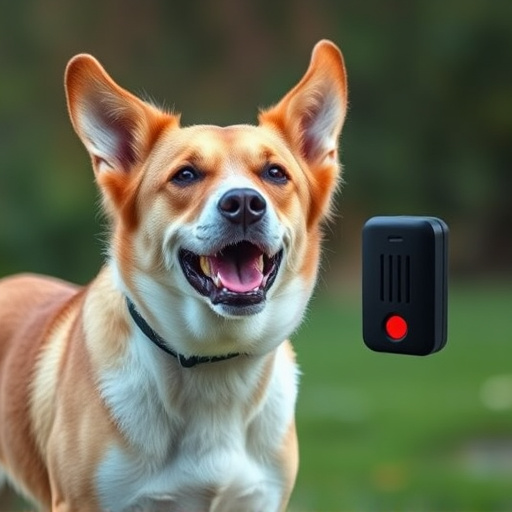Humane training modes using electronic repelants with ultrasonic technology provide a safe, effective solution for dog training. These devices emit high-frequency sounds invisible to humans but disruptive to dogs, immediately correcting unwanted behaviors like jumping or excessive barking. By triggering a natural reflex without physical harm, they promote positive reinforcement and strengthen the bond between owner and pet, making them a versatile and powerful tool for trainers. Best practices include responsible use, clear commands, short sessions, rewarding good behavior, appropriate volume settings, and regular adjustments as the dog progresses.
“Unleash a new era of dog training with safe and innovative ultrasonic technology. This article explores how electronic repellents, a humane alternative to traditional methods, can positively impact your pet’s behavior. We delve into the science behind these devices, their effectiveness in various training scenarios, and provide essential tips for responsible use. By adopting humane training modes, owners can foster positive relationships while addressing behavioral challenges, making it a game-changer for modern dog care.”
- Understanding Ultrasonic Technology for Dog Training: A Safe and Humane Approach
- How Electronic Repellents Work and Their Benefits in Dog Training
- Implementing Humane Training Modes: Tips and Best Practices for Dog Owners
Understanding Ultrasonic Technology for Dog Training: A Safe and Humane Approach
Ultrasonic technology in dog training is a safe and humane approach that utilizes high-frequency sound waves to communicate with canines. Unlike traditional punishment methods, electronic repellents emit harmless sounds that only dogs can hear, making them an effective yet gentle tool for modifying behavior. This technology operates on the principle of positive reinforcement, encouraging desired actions through subtle auditory cues.
By employing humane training modes, trainers can motivate dogs without causing physical discomfort or distress. The ultrasonic device emits a frequency that is above the human hearing range but triggers a natural reflex in dogs to avoid the sound source. This method is particularly useful for addressing issues like barking, jumping, or pulling on leashes. It promotes a calm and positive training environment while fostering a stronger bond between the owner and their pet.
How Electronic Repellents Work and Their Benefits in Dog Training
Electronic repellents, often featuring ultrasonic technology, have emerged as innovative tools in dog training. These devices operate by emitting high-frequency sound waves that are inaudible to humans but can be detected and irritated by dogs. When a dog exhibits unwanted behavior, such as jumping on furniture or barking excessively, the repellent is triggered, emitting this ultrasonic signal. The immediate response is an unpleasant sensation for the dog, encouraging them to stop the behavior. This method is particularly effective because it promotes positive reinforcement without resorting to punishment.
One of the significant advantages of electronic repellents is their humane training modes. Unlike traditional punitive methods, these devices do not cause physical harm or pain. They simply disrupt the dog’s focus by making an unpleasant sound, allowing for a more gentle and effective learning process. Additionally, they can be highly versatile, targeting specific behaviors like barking, jumping, or even inappropriate digging, offering trainers precise control during training sessions.
Implementing Humane Training Modes: Tips and Best Practices for Dog Owners
Implementing Humane Training Modes: Tips for Dog Owners
When considering dog training, it’s paramount to prioritize humane methods that respect your pet’s well-being and instincts. Electronic repelants, often utilizing ultrasonic technology, offer a safe and effective alternative to traditional, potentially harmful techniques. These devices emit high-frequency sounds or vibrations that are unpleasant for dogs, encouraging desired behaviors without physical punishment.
Best practices involve using these tools responsibly and sparingly. Set clear, consistent commands before engaging the repellent. Train your dog in short, positive sessions, rewarding good behavior to reinforce learning. Always ensure the device is set at a level that’s audible but not harmful to your pet. Regularly review and adjust training methods as your dog progresses to maintain a harmonious and effective learning environment.
In conclusion, ultrasonic technology offers a safe and humane approach to dog training by employing electronic repellents. By understanding how these devices work and implementing best practices, dog owners can harness their benefits while maintaining positive reinforcement methods. Adopting humane training modes ensures your pet’s well-being and fosters a stronger bond between you both.
